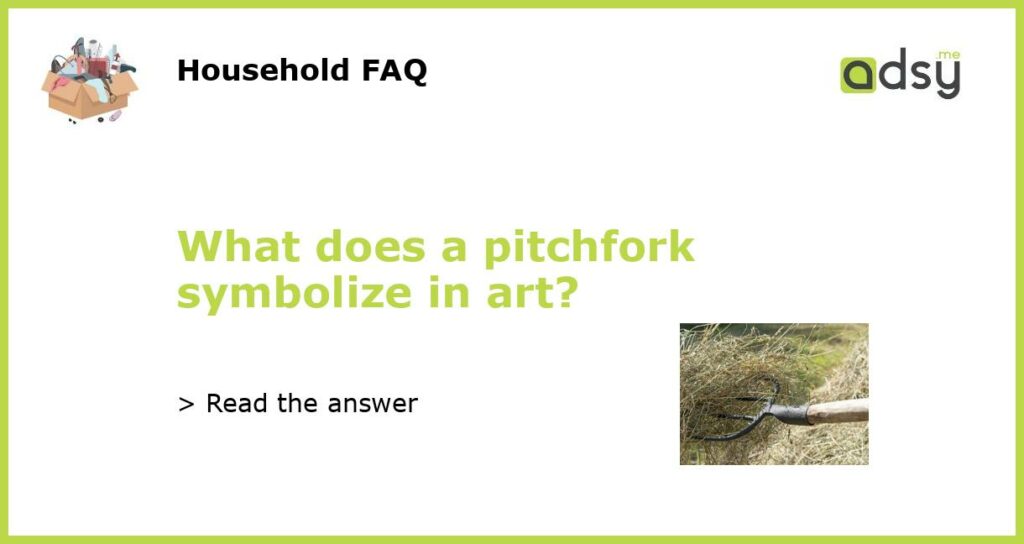The Symbolism of a Pitchfork in Art
A pitchfork, a long-handled farming tool with sharp tines, has long been used symbolically in art to represent various themes and ideas. The symbolism attached to a pitchfork can differ based on cultural, historical, and artistic contexts. From representing labor and agriculture to signifying rebellion and social movements, the pitchfork has evolved as a powerful symbol in art.
Representing Labor and Agriculture
In art, a pitchfork often serves as a symbol of labor and agriculture. This representation can be traced back to the works of seventeenth-century Dutch painters known as genre painters. These artists, such as Pieter Bruegel the Elder, depicted scenes of rural life and work in their paintings. In their compositions, the pitchfork was commonly included to symbolize the daily toil and hard work of farmers and laborers.
Additionally, during the nineteenth century, when industrialization was transforming societies and rural life was giving way to urbanization, artists like Jean-François Millet became prominent for their depictions of peasant life. Millet’s painting “The Gleaners” is a prime example where a pitchfork is prominently featured, representing the labor and struggles of the working class.
Signifying Rebellion and Social Movements
In some contexts, a pitchfork has been utilized as a symbol of rebellion and social movements. One notable example is Grant Wood’s iconic American Gothic painting, which depicts a farmer and his daughter standing in front of a house with a prominent pitchfork. The painting, created during the Great Depression, is widely interpreted as a commentary on the resilience and strength of the American people during challenging times.
The pitchfork in American Gothic has also been associated with notions of agrarian populism and resistance against urbanization and industrialization. It has become a powerful symbol of rural Midwestern values and has been adopted by various political and social movements.
Religious and Mythological Symbolism
A pitchfork can also carry religious and mythological symbolism in art. In Christian iconography, it is sometimes associated with the devil. In representations of the biblical scene of the Last Judgment, for example, the devil is often depicted holding a pitchfork as a weapon of punishment and torment.
Furthermore, in Greek mythology, Hades, the ruler of the underworld, is often portrayed with a pitchfork, known as a trident. The trident, typically associated with power and authority, serves as a symbol of Hades’ control over the realm of the dead.
Contemporary Interpretations
In contemporary art, the symbolism of the pitchfork continues to evolve. Artists often incorporate pitchforks into their works to explore themes of labor, social inequality, and political activism. For example, street artist Banksy has incorporated the pitchfork into several of his politically-charged artworks. One notable piece features a protester hurling a bouquet of flowers instead of a weapon, subverting the traditional association of the pitchfork with aggression and rebellion.
The pitchfork’s symbolism in art is not static and can vary depending on the artist’s intentions and the viewer’s interpretation. It remains a potent symbol that resonates with different audiences, connecting them to historical, cultural, and social narratives.






